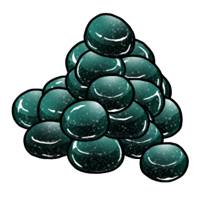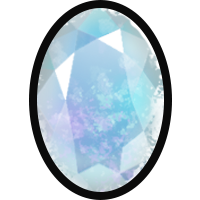As far as I know*, each color has an equal chance to land, making the
odds for each dependent on how many colors lay between the parents'-- 1
in 3 will be a surer shot than 1 in 25. That's for each color "slot"
individually, so your odds can be great or really poor depending on what
you have to work with. Sometimes you can get lucky and get a fantastic
result from a pretty long shot pair, but on average you shouldn't bank
on that!
If you're starting a project for something that doesn't exist commonly enough to be sold on the flea market, sometimes you gotta start with pairs that are pretty far on either side of the project and just narrow them down continuously. It can be a real pain, but starting with as many pairs as possible will get you to the end quicker... It's not easy on den space, but it does also mean you are almost never without frog fodder! So pros and cons. :P
I'm working on quad sand and quad oak projects right now, as well as a longer-term (wider starting pair ranges) projects looking for black/oak/umber/bark, blood/sand/blood/cherry and black/white/cream/cream end results!
There are even-longer-term projects I'm doing (where I don't have full pairs or only have one longer-range pair yet) for carob/silver/mocha/cinnamon and tawny/white/ginger/silver (two unrelated coyote projects, because why not, I guess?)
Projects I've completed (color wise, some still need their final patterns) so far have been:
This oak/oak/pecan/russet
|
This clay/silver/clay/sepia
|
This quad cream
|
This russet/russet/seal/ebony |





